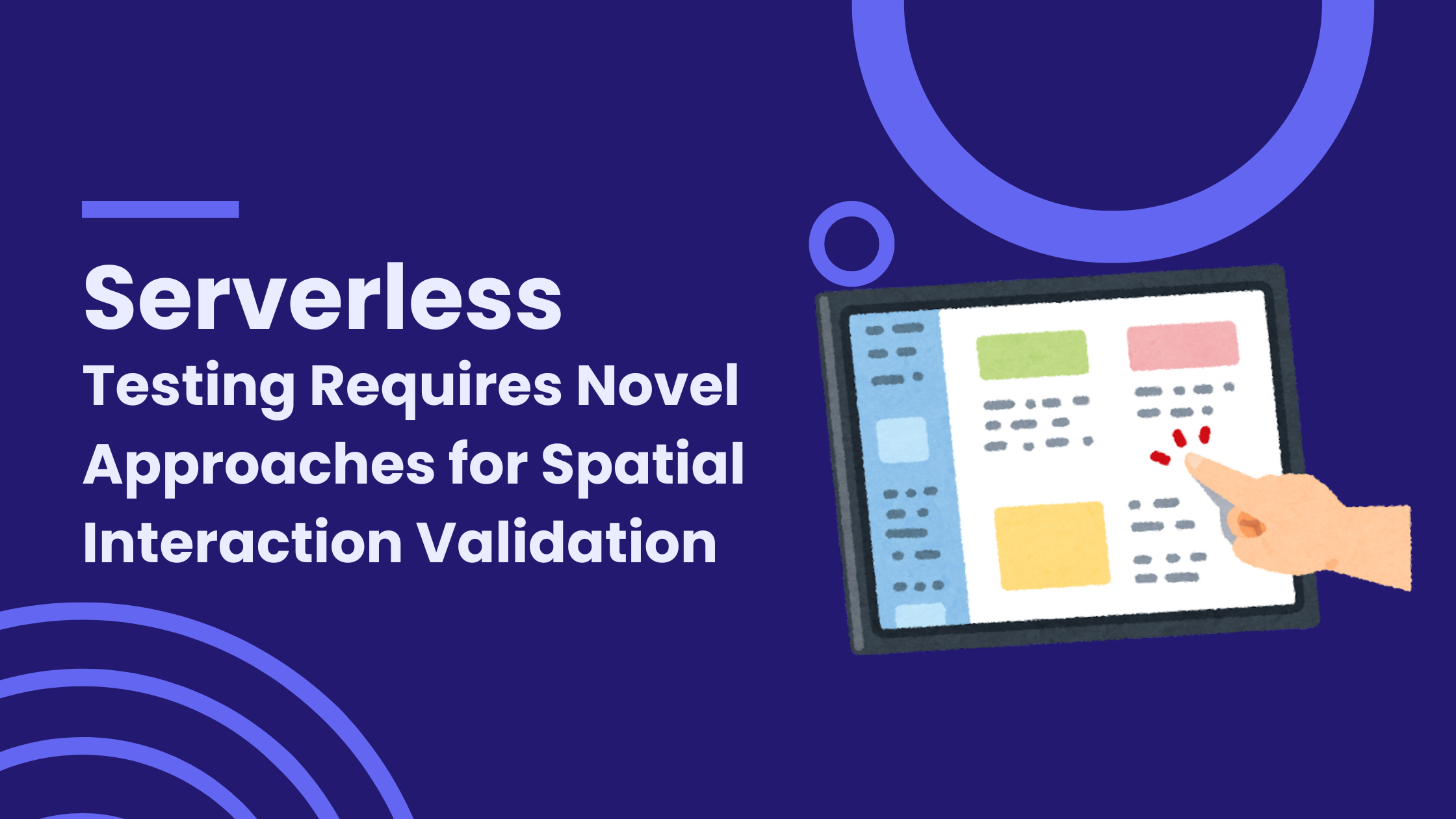Quick Listen:
Serverless architecture has swiftly become a key component of modern application development, transforming how businesses scale their services. With its promise of reduced infrastructure overhead and dynamic scalability, it's no surprise that companies are adopting serverless environments.
However, as organizations embrace this shift, they quickly encounter a unique set of challenges when it comes to testing these distributed, event-driven systems. Traditional testing methods, which once worked for monolithic applications, are no longer adequate.
1. The Ephemeral Puzzle: Debugging in a Stateless World
One of the most pressing challenges in serverless testing is debugging across a stateless, event-driven architecture. In serverless systems, each function performs a task and then terminates, leaving no persistent state. This lack of state persistence makes it difficult to trace issues, monitor execution, and debug failures when things go wrong. Traditional debugging tools, which are designed for persistent server environments, are less effective in these transient systems.
Fortunately, modern tools are addressing this gap. For instance, services like AWS X-Ray and OpenTelemetry allow teams to trace requests across serverless functions. These tools create a visual map of function interactions, making it easier to pinpoint where issues arise. By providing a clear trace of function invocations, they give developers a window into the often complex world of serverless communication.
By leveraging these tools, teams can build observability into their serverless systems, ensuring that even in a stateless environment, they can identify problems before they escalate.
2. Cold Start Conundrum: When Speed Meets Scalability
Scalability is one of the biggest advantages of serverless systems, but it also comes with a challenge: cold starts. In a serverless environment, when a function is triggered after being idle, it can experience a delay as the system initializes the required resources. These delays, known as cold starts, can impact performance, especially in applications with high throughput requirements.
Cold starts occur when serverless functions, which are typically run in response to events, need to load their dependencies and initialize the execution environment. This can cause a noticeable delay, particularly for systems requiring rapid response times. For example, a user may experience a lag before an API call returns a result or a request is processed.
To mitigate cold start latency, one effective solution is provisioned concurrency. This AWS feature keeps functions warm by pre-initializing them, ensuring they are ready to handle incoming requests with minimal delay. By configuring provisioned concurrency, serverless applications can scale dynamically while delivering fast response times.
3. Mocking the Cloud: Simulating Services in Testing
Testing serverless applications involves simulating cloud services in a local environment. Since serverless functions often interact with APIs, databases, and other cloud services, testing without replicating these services can lead to incomplete or inaccurate results. Tools like LocalStack and the Serverless Framework have emerged as solutions to this problem.
LocalStack, for instance, allows developers to spin up a local AWS cloud environment, enabling them to test AWS services like DynamoDB, and S3 without connecting to the actual cloud infrastructure. Similarly, the Serverless Framework provides an abstraction layer for deploying serverless applications locally, allowing for the simulation of API Gateway, and other serverless services in a developer's own environment.
By using these tools, developers can efficiently test interactions between serverless functions and cloud services, ensuring that their applications work as expected before they hit production. This local simulation also reduces the risk of costly mistakes that might arise from testing directly in the cloud.
4. Chaos Engineering: Breaking to Build Resilience
An unconventional but effective method for testing serverless systems is chaos engineering. The principle of chaos engineering involves intentionally introducing failures into a system to see how it reacts. This practice is essential for ensuring system resilience.
In a serverless environment, failures can occur for various reasons, such as a function timing out, a database becoming unavailable, or network latency increasing unexpectedly. Chaos engineering allows teams to simulate these failures in a controlled manner, providing valuable insights into how well the system can withstand and recover from disruptions.
By integrating failure injection into testing workflows, organizations can proactively identify weaknesses in their serverless architecture. For example, tools like Gremlin allow for controlled chaos experiments that simulate real-world failures, enabling teams to identify potential points of failure and strengthen their application's resilience to outages.
5. Cost Monitoring: The Silent Validator
Another often-overlooked aspect of serverless testing is cost management. Serverless computing, while cost-effective in many cases, charges based on the actual resources consumed, such as the number of function invocations and the duration of each execution. Without proper monitoring, this can lead to unexpected cost increases, especially during testing phases when resource consumption might be higher than anticipated.
The key to effective cost monitoring is establishing clear thresholds and alerts. This way, if testing begins to drive up costs, teams can quickly adjust and prevent unexpected billing increases.
6. Future-Proofing: Emerging Tools & AI Integration
As serverless technology continues to evolve, so do the tools available for testing it. One promising development is the integration of artificial intelligence (AI) into serverless testing workflows. AI-driven tools can automate aspects of testing, including anomaly detection and pattern recognition.
For example, AI-powered testing frameworks can help identify unusual behavior in serverless applications by analyzing execution patterns and flagging potential issues before they cause failures. These tools can also optimize test coverage by learning from historical testing data and suggesting new test cases based on previous failures or system behavior.
Mastering the New Testing Frontier | Serverless Architecture
In the end, mastering the complexities of serverless testing requires a balanced approach one that combines agility with reliability, speed with scalability, and innovation with cost-effectiveness. With the right mindset and tools, teams can confidently navigate the challenges of serverless architecture testing, ensuring that their systems are ready for future demands.
You may also be interested in: Best 14 CI/CD Tools to Know in 2024 for Developers
Book a Demo and experience ContextQA testing tool in action with a complimentary, no-obligation session tailored to your business needs.
